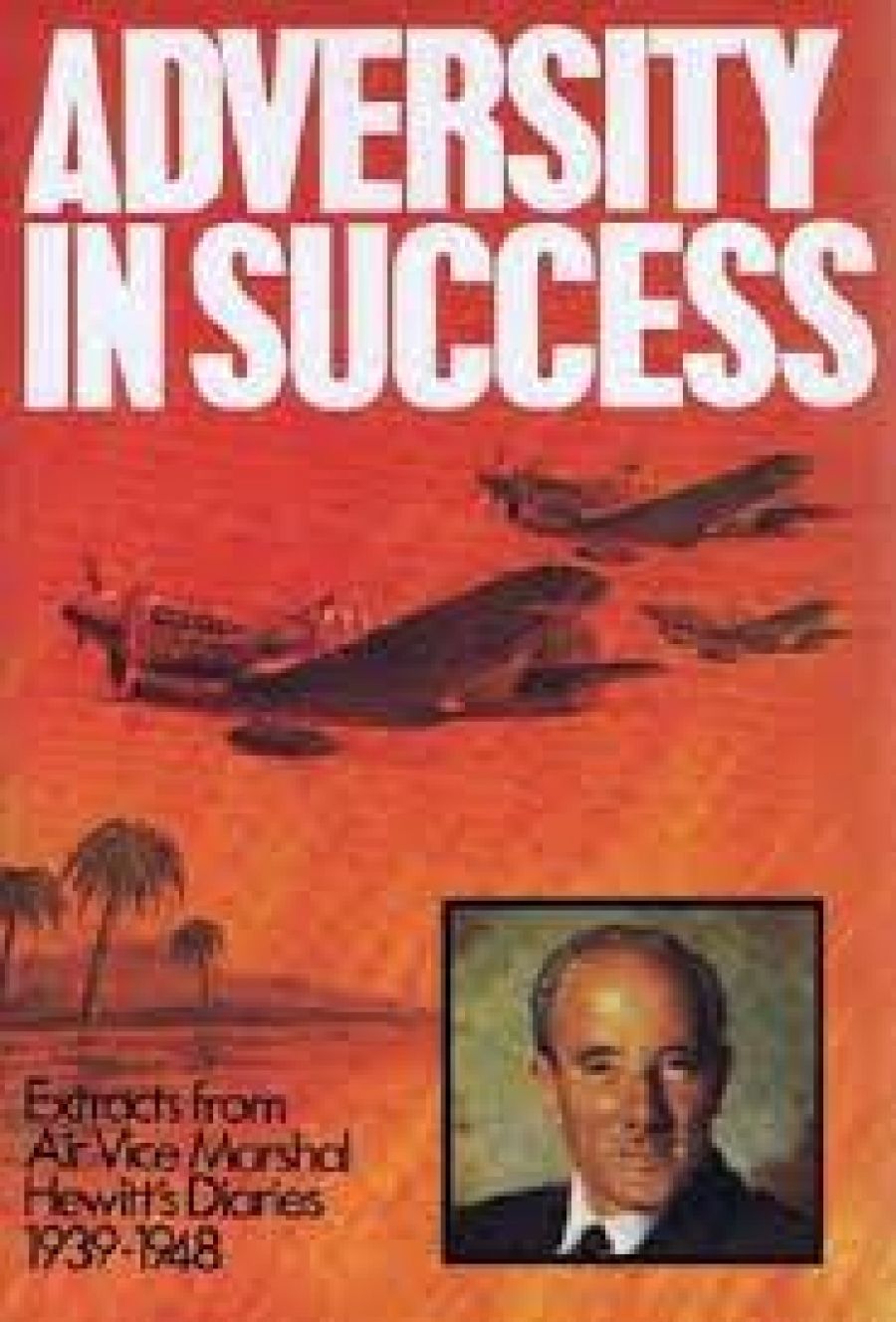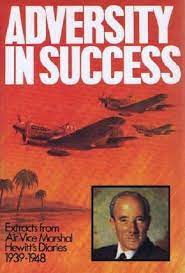
- Free Article: No
- Contents Category: Biography
- Review Article: Yes
- Article Title: Wartime Clashes
- Online Only: No
- Custom Highlight Text:
The memoirs of Australian war leaders have not enjoyed the commercial success gained by American and British commanders. Monash’s The Australian Victories in France in 1918 is possibly the only book of its sort which has ever had any real success. In the last few years the Australian Trenchard, Air Marshal Sir Richard Williams, could not attract a commercial publisher for his autobiography, though it covered the entire creation of the RAAF. Public interest apart, the fact is that Australian generals, admirals and air marshals do not tend to be literary. We just cannot imagine an Australian Slim. The only classic works produced by any Australian connected with the armed forces and aviation in general have been P.G. (Sir Gordon) Taylor’s finely wrought books.
- Book 1 Title: Adversity in Success: Extracts from Air Vice-Marshal J.E. Hewitt’s diaries 1939-1948
- Book 1 Biblio: Langate Publishing
- Book 1 Cover Small (400 x 600):

Hewitt’s memoirs have the advantage that they are written by one of the RAAF’s most controversial figures. Educated for the RAN at Jervis Bay, he served with the RN in the Black Sea at the end of WW I and transferred to the RAAF in 1928. He was one of that small group of regulars which had to inherit the wartime air force’s top commands. He prepared for this with wartime service in SE Asia in the first days of the Japanese War and was then Assistant Chief of the Air Staff and later Director of Allied Air Intelligence at MacArthur’s HQ in 1942-3.
When he was sent to command the newly formed No. 9 Operations Group in 1943 Hewitt appeared to have the qualities needed as the commander of the largest Australian force fighting the air war against Japan. The story of his removal from command of that force is one of the classic RAAF controversies, in a service which for better or worse suffered a good many in WWII.
Hewitt has not made this book a mere apologia, though he must obviously present his case. He has the sense and intelligence not to go too far with it, though his statement that jealousy was at the root of the problem cannot be accepted without the other side of the affair being considered. Until Sir George Jones writes and publishes his memoirs, that side must be lacking, but the truth about all these wartime controversies, here and abroad, is that they were at root casebooks in personality clash and character stature.
One of the more interesting aspects of Hewitt’s diaries is the stand he took in the bigger and more vital clash between Jones and the forward RAAF commander, Bostock. These men were of equal rank, unfortunately, and of almost inconceivably disparate temperament, character, manner and physique. Jones was a fighter ace of 1918 who did not look the part but a man of far greater character than many people have considered. Bostock was personally ambitious, self-righteous. The Americans did not hesitate to stand back and allow the profit from this clash to fall their way.
Hewitt told Bostock to his face that Jones was his superior in appointment if not in rank and had to be obeyed for the good of the Service. The alternative was prejudicial to good discipline. That Bostock could not accept this advice was, of course, a commentary on the basic character of the man.
Hewitt’s own situation was considerably affected by the American treatment.
General Kenney (MacArthur’s air commander and Hewitt’s operational superior) and other US commanders seemed to like Hewitt and they certainly made him feel that his command status was not in peril right to the last. That they respected him seems obvious from the fact that Kenney made him Allied Intelligence chief again right after Hewitt's removal from command.
It was all a curious business.
It was made more curious when only months later Jones, who had been personally responsible for the Hewitt removal, appointed him Air Member for Personnel, with a seat on the Air Board which was the collective Commander-in-Chief of the RAAF. (Jones has told me that Hewitt was the only officer available of the right rank at the time.)
This book is worth reading for more than the Hewitt controversy – it presents the detailed views and reactions of a most intelligent observer to the wartime RAAF and Allied forces and personalities. Hewitt moved in very high circles and was able to see enough of the real war to form opinions of some weight. It is this which makes this book valuable rather than the reason for the book’s appearance.
Frankly, the whole production would have been even more valuable had a professional editor been let loose on the manuscript. The physical production is good but the material sadly needs organisation, editing and even correction – I understand all these will be furnished in the second edition.


Comments powered by CComment